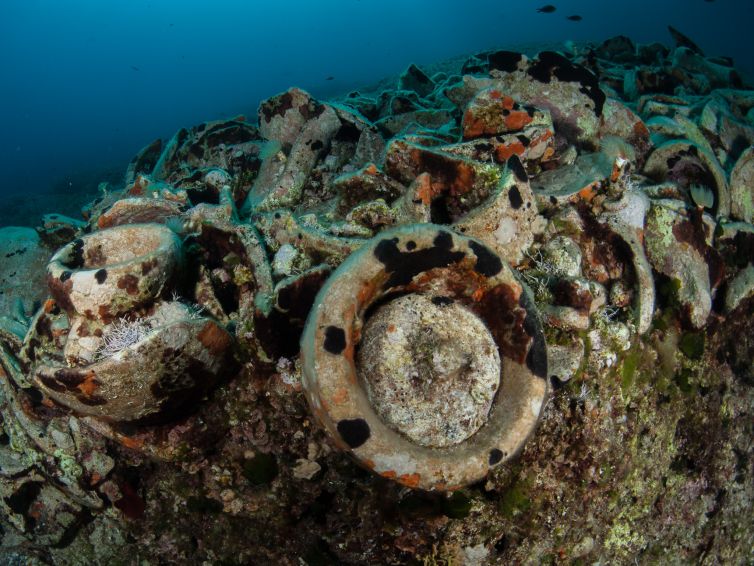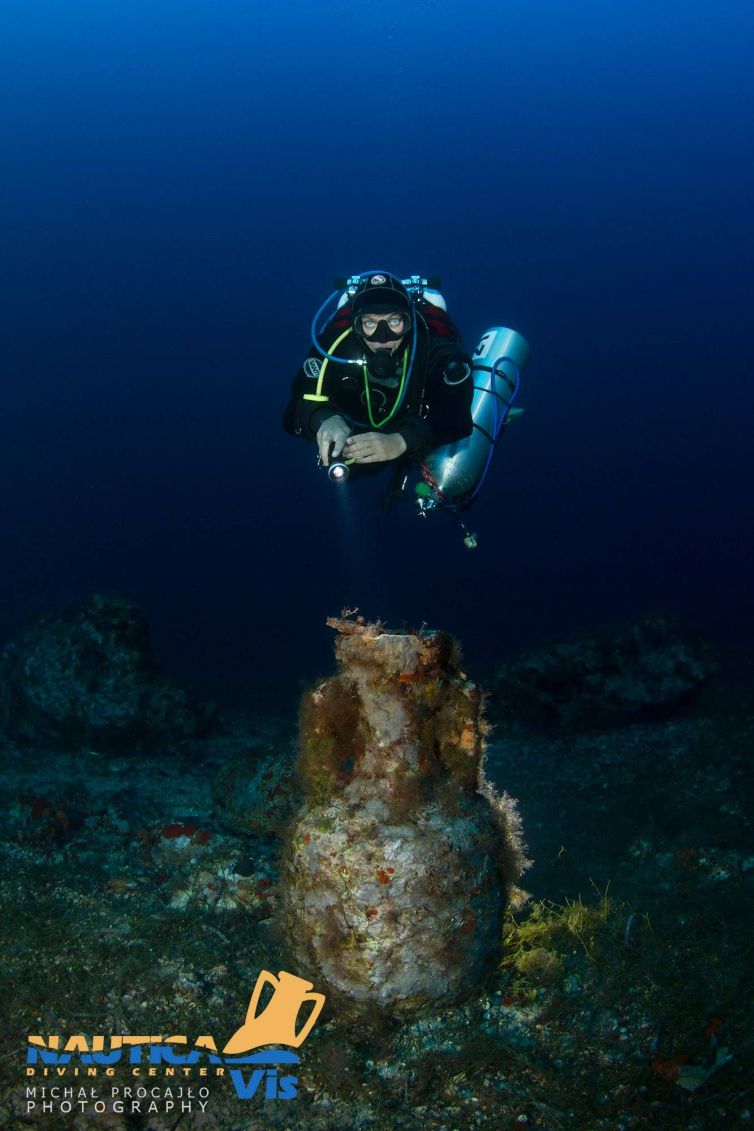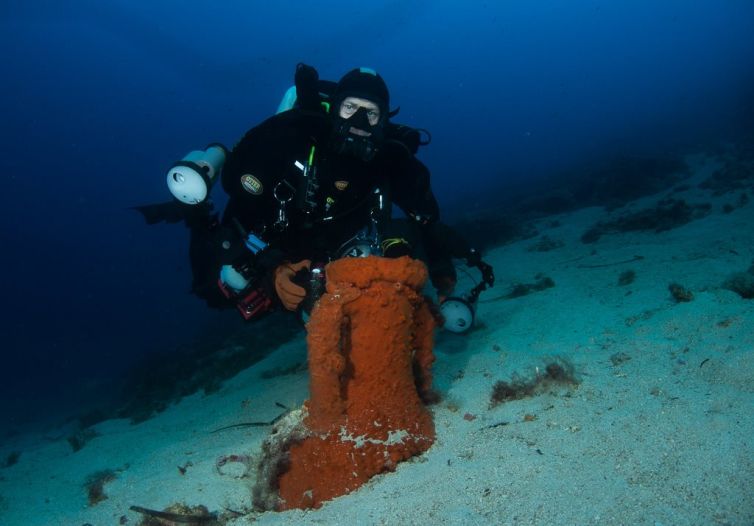Dive Sites
Host

dive site type: archaeological site
difficulty: easy
depth range: 0-35 m
distance from the diving center: 1 nm
short characteristic: a few concentrations of differently preserved pieces of the amphorae with one complete amphora standing at the depth of 35 m
The name of Host refers to the isle located at the entrance to the Vis Bay and comes from the British officer William Hoste, who contributed to defeat the French navy during the Battle of Lissa in 1811. Nowadays there is a lighthouse on the isle of Host, but in ancient times this unmarked isle was a great obstacle to navigation.
As a result of hitting the rocks, there must have sunk more than one ship in this place. Right now there is nothing left of the wooden vessels, whereas their cargo remained in the form of differently preserved pieces of amphorae – ceramic containers used for storage and transportation among others wine and olive oil. On the northern side of the isle there are two archaeological sites with Roman amphorae dated back to the 2nd century BC.
The dives are usually organized on the north-east side of the isle. The boat moors in the place, where the bottom is at the depth of about 6 m. It is a quietly sloping rocky bottom interlaced with sea grass. Due to a distance between the isle of Host and the Vis island, in this place waves and weak currents are relatively common. When those exist, over the grass the divers can see huge shoals of small silver fishes – common two-banded seabreams, white seabreams, saddled seabreams and cow breams.
The majority of time underwater, however, is being spent in the places, where the amphorae are located. The shallowest concentration can be found at the depth of about 9 m, the next one starts on 13 m and extends to 18 m. These two consists of tight-knitted pieces of bodies, among which rims, necks and handles can be found.
Amphorae are inhabited by painted combers, Mediterranean morays, hermit crabs, octopuses and many different animals. Besides the amphorae, perceptive diver can notice various utensils, porcelain and even quern-stones – amenities of the sunken ship. Deeper, the amphorae are more scattered, preserved in larger pieces and covered with red sponges.
At the depth of about 30 m the slope goes into a sandy plain. It’s worth to swim over it for a while to find, at the depth of 35 m, the only complete standing amphora with a height of about 80 cm. An interesting find is a millstone for grinding wheat, which could have been also used as an anchor.


















